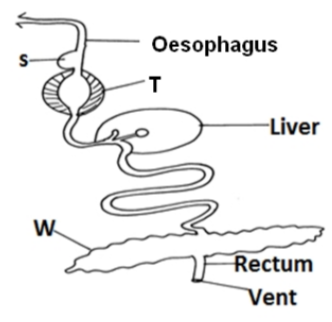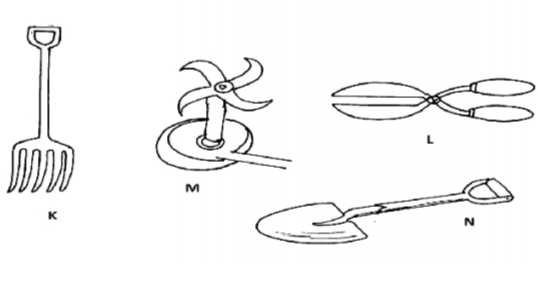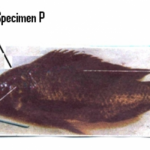KCSE Agriculture Paper 2 – 2014 EKSIKA Joint Evaluation Test
2014 EKSIKA Joint Evaluation Test
Agriculture Paper 2
SECTION A (30 Marks)
Answer all questions in this section.
State four factors that influence the quality of bricks.
2 marks
Give four functions of vitamins in livestock production.
2 marks
Give two characteristics of a good creep feed.
1 marks
State two limitations of wood fuel as a source of firm power.
1 marks
Mention four ways in which power is transmitted from the engine of a tractor.
1 marks
Give four pre-disposing factors of scours in calves.
2 marks
What is the functional difference between cold chisel and wood chisel.
2 marks
State three characteristics of goats that make them adaptable to arid – areas of Kenya.
1.5 marks
Give two signs that would indicate that a cow has died of cowthrax.
1 marks
List two tools you would require when smoothening concrete walls during plastering.
1 marks
List four farm structures that would assist in control of livestock parasites.
2 marks
State three desirable characteristics to be considered when a heifer for a milk production.
3 marks
Distinguish between interbreeding and out crossing in livestock production.
3 marks
(a) Mention four reasons why bees swarm. (2mks)
(b) State two methods to stock bee hives. (1mk)
3 marks
State four reasons for castrating a male cattle.
2 marks
Give two reasons for steaming up in dairy cattle manangement.
1 marks
Give three reasons why honey harvesting should be discouraged at night.
1.5 marks
SECTION B (20 Marks)
Answer all questions in this section.
The diagram below is a biogus digester.
(a) Name the parts labeled X and Z. (2mks)
(b) Name two inputs periodically channeled through X. (2mks)
(c) Name the use to which material Y is put. (1mk)
(d) Name two uses of biogas on the farm. (1mk)
6 marks
Below is the diagram of a digestive system, use it to answer the question that follows.
(i) Which farm animal has a digestive system similar to the above system.(1mk)
(ii) Name the parts labeled S, T and W. (3mks)
(iii) Explain the work of the parts S and T. (2mks)
6 marks
Study the diagrams below and answer the questions that follow.
(a) Identify the tools K, L, M and N. (2mks)
(b) Give the use of K and L. (2mks)
4 marks
The diagram below illustrates a breeding management practice.
(a) Identify the practice. (1mk)
(b) Outline three reasons for carrying out this practice. (3mks)
(c) Give three causes of infertility in farm animals. (3mks)
7 marks
SECTION C (40 Marks)
Answer only two questions in this section.
(a) Describe the factors to be considered before siting a cattle dip. (4mks)
(b) Name any six essential parts of a spray race and describe their functions. (6mks)
(c) Describe five disadvantages of using a spray race. (5mks)
(d) Give five advantages of Kenya Top Bee Hive. (5mks)
20 marks
(a) Describe hand milking in a dairy cow. (12mks)
(b) Explain the practices observed in a clean milk production. (8mks)
20 marks
Discuss the management of layers from day old up to point of laying in a deep litter system.
20 marks








